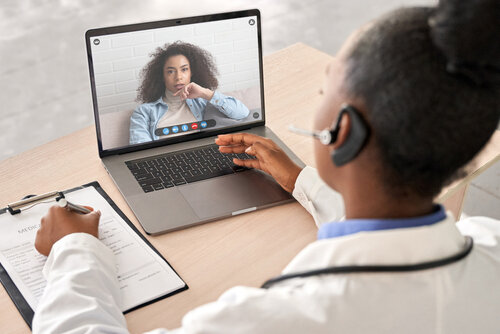Best Practices for Virtual Health Visits
Telehealth surged in popularity during the pandemic, and virtual patient visits are becoming increasingly common. With virtual appointments, providers can save money, improve clinical outcomes, increase patient engagement, and expand access to care for those who can’t travel to a health facility. Virtual medicine is not likely to end with the pandemic, so it’s critical to host your virtual visits so your patients are comfortable. Best practices for virtual medical visits include:
Setting and logistics
Be fully prepared prior to an online patient consultation. Create a setup checklist to follow before each virtual session. Review the patient’s chart before the visit, and confirm HIPAA compliance. Anyone else in the room should be bound by HIPAA and approved by the patient.
Checking for adequate lighting, and be sure there is no glare. Eliminate clutter in the background and limit background noise. Ask the patient to rearrange furniture, adjust lighting, or change position to give you a better view for the exam. Advise patients ahead of time about what type of clothing to wear for easier examination.
Check your network connections, and have your IT or nursing staff contact the patient to ensure their connection and devices are functioning properly. For patients unfamiliar or uncomfortable with technology, provide written instructions. Do a practice run and review the video to address any problems.
Your video presence
You’re not physically with the patient, but you still want to appear and act in a professional manner. Dress as you would for an in-person consultation. Introduce any other staff members who will be present at the beginning of the visit. Look at the camera so the patient feels like you’re talking to them. Maintain a good bedside manner, and put the patient at ease by being relaxed and friendly. A bit of humor helps reduce anxiety.
Communication and engagement
During your virtual visit, make sure to talk directly to the patient. Use clear, concise language, and avoid medical jargon. Use active listening techniques such as repeating patient questions and comments back to them. Check in with the patient frequently to make sure they understand. Show empathy and allow the patient to share in decision-making.
Wrap up a virtual visit by outlining treatment steps and detailing next actions. Schedule necessary follow-up visits, and let the patient know these virtual visits are just as important as in-person appointments. End with a friendly goodbye.




